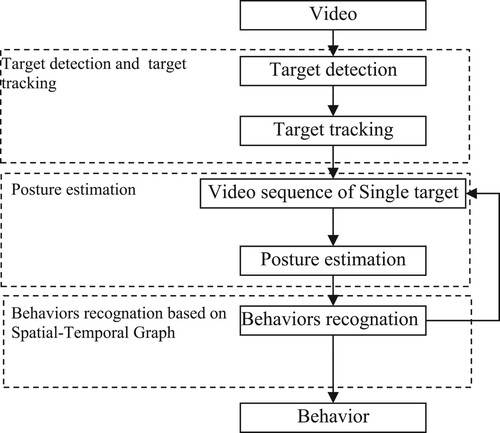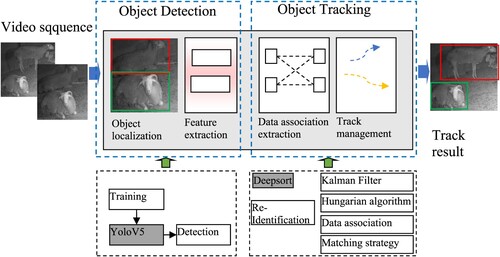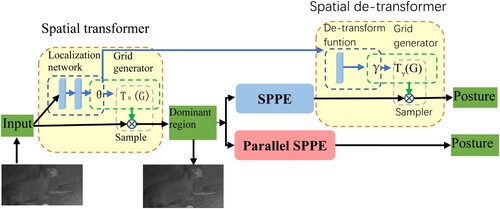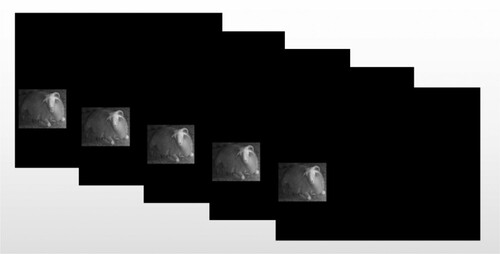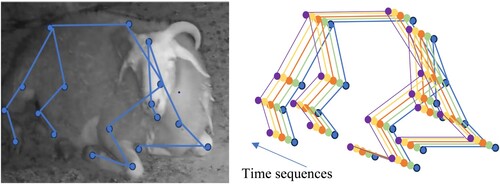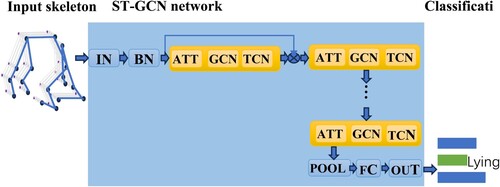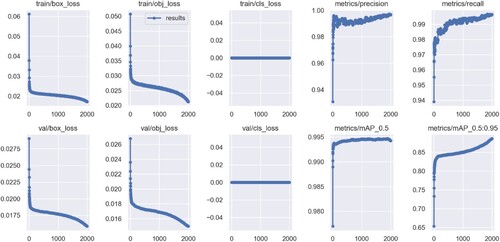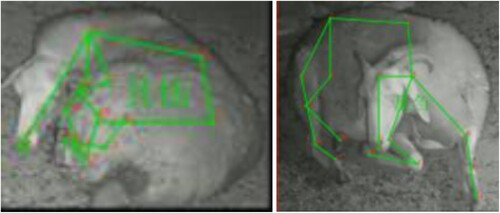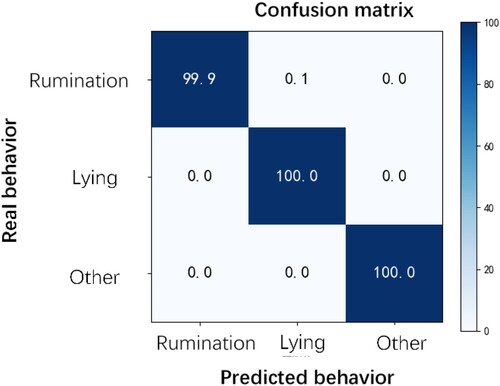Figures & data
Table 1. The basic behaviours of sheep in a house.
Table 2. The model training environment and parameter configuration.
Figure 4. Selection of the sheep’s keypoints. (a) Schematic of the sheep’s keypoints Selection (b) Example of the sheep’s keypoints labelling 1. Nose; 2. Lower lip; 3. Head; 4. Neck; 5. Back; 6. Rump; 7. The elbow of the left front leg; 8. The elbow of the right front leg; 9. The elbow of the left back leg; 10. The elbow of the right back leg; 11. The knee joint of the left front leg; 12. The knee joint of the right front leg; 13. The knee joint of the left back leg; 14. The knee joint of the right back leg; 15. The toe of the left front leg; 16. The toe of the right front leg; 17. The toe of the left back leg; 18. The toe of the right back leg.

Table 3. The basic behaviours of sheep in a house.
Table 4. The test results of Yolo V5 for multi-target tracking.
Table 5. The average accuracy of Alphapose for different key points.
Figure 11. The result of the test. (a) Graph of precision; (b) Graph of loss; (c) Confusion matrix on test set.
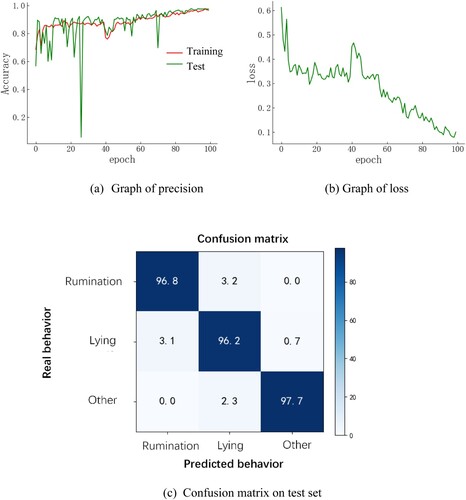
Figure 14. Improved selection of the sheep’s keypoints. 1. Nose; 2. Lower lip; 3. head; 4. neck; 5. The elbow of the left front leg; 6. The elbow of the right front leg; 7. The knee joint of the left front leg; 8. The knee joint of the right front leg.
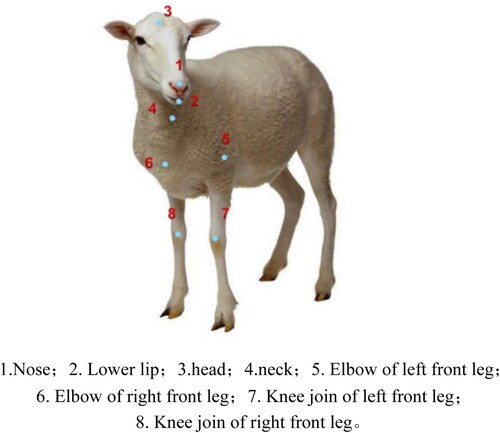
Table 6. The test results of Alphapose for posture estimation.
Table 7. The average accuracy of Alphapose for different key points.
Figure 17. Behaviour recognition results of the improved model. (a) Rumination; (b) Lying; (c) Other.

Table 8. The test results of Yolo V8n for multi-target tracking.


